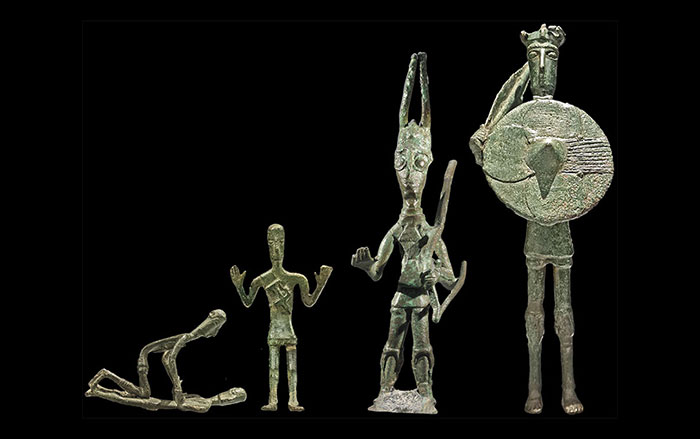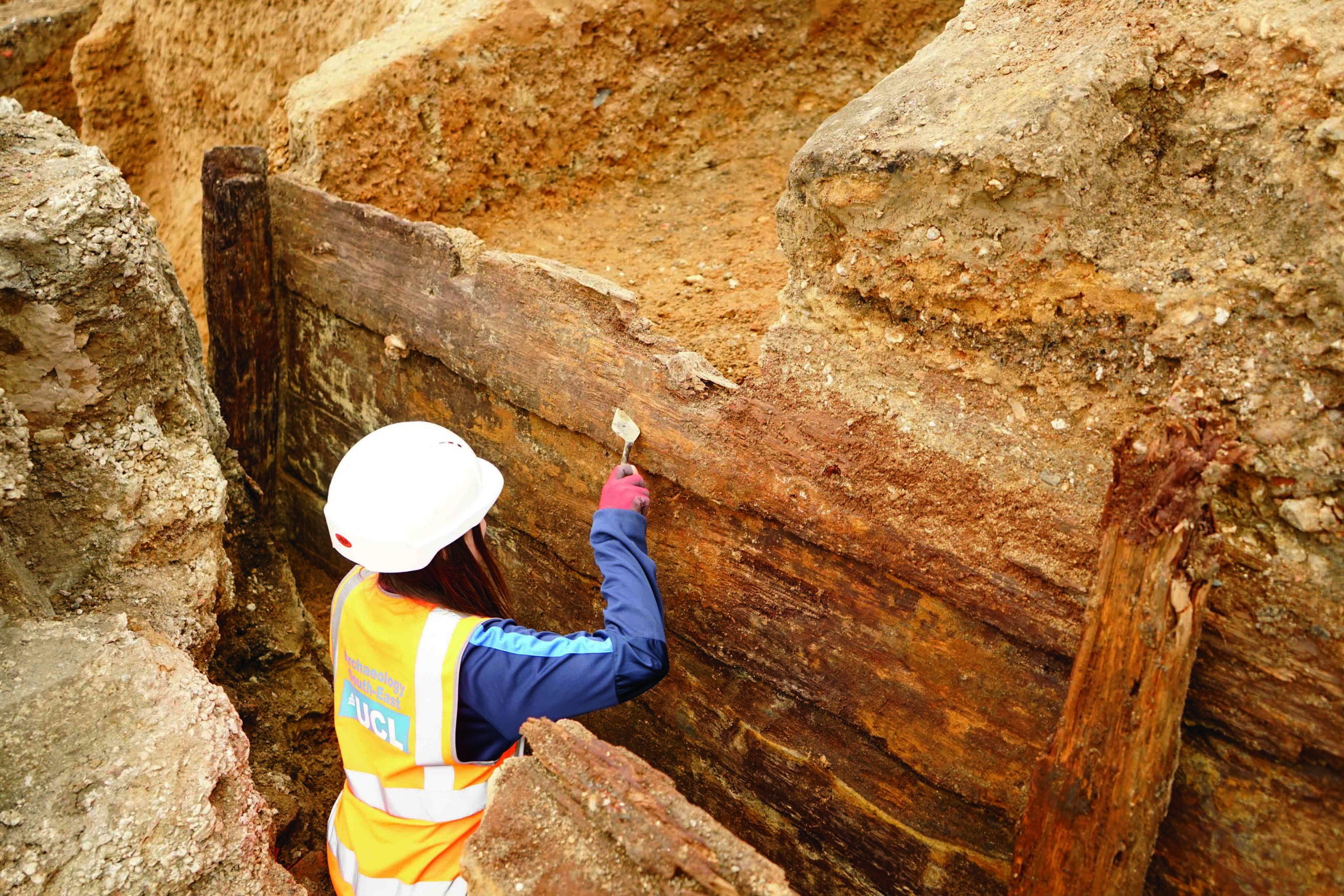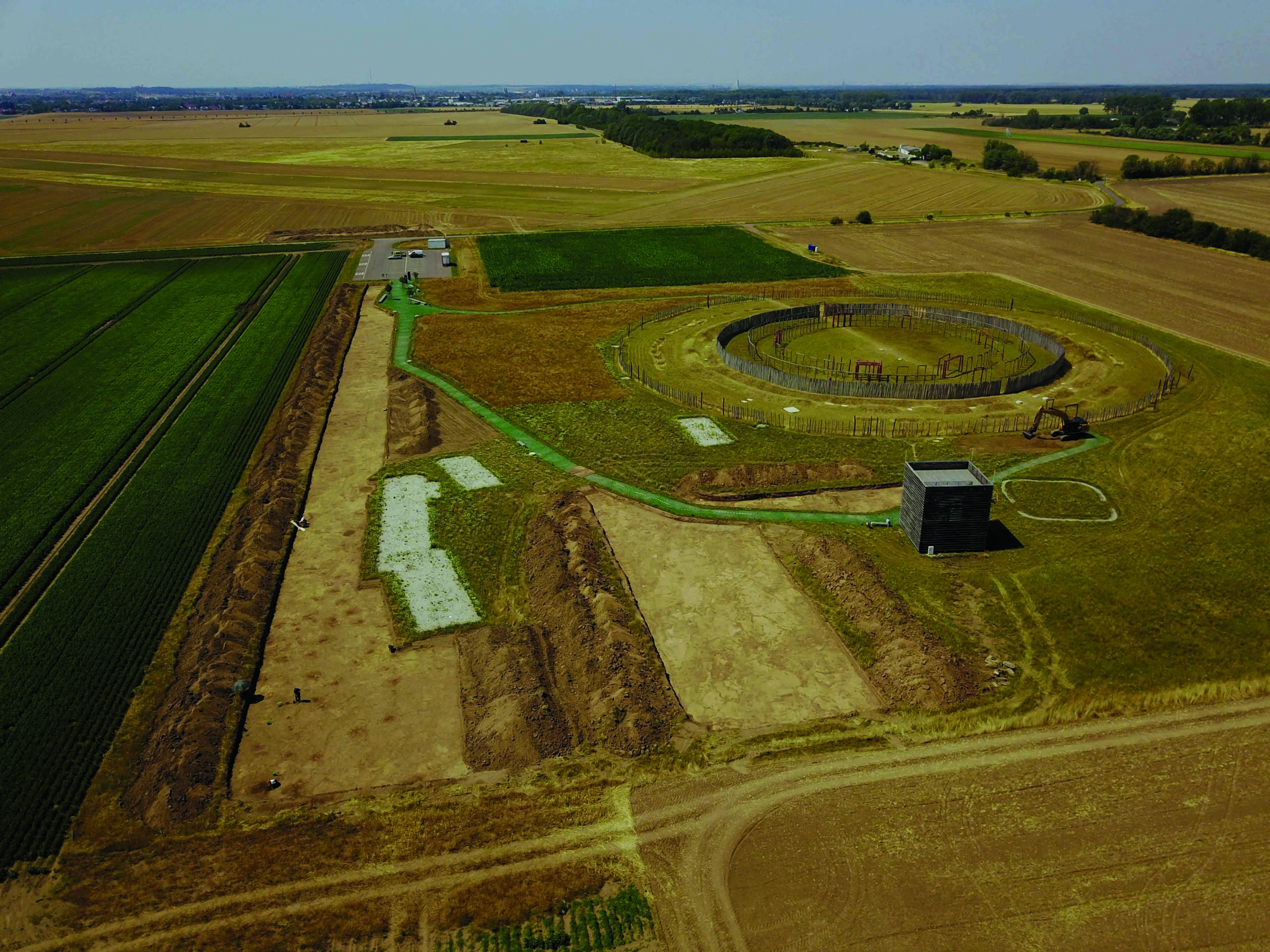
SICHUAN PROVINCE, CHINA—CNN reports that more than 500 artifacts have been found in six sacrificial pits at Sanxingdui, a Bronze Age site in southwestern China discovered in the 1920s and thought to have belonged to the independent Shu state, which was conquered in 316 B.C. A gold ceremonial mask and other decorative items made of gold foil, an unopened wooden box, an owl-shaped bronze vessel, and other objects made of bronze, ivory, jade, and bone have been recovered. Many of the objects appear to have been burned as they were dropped into the burial pits. Traces of silk and other textiles have also been detected on the artifacts. Tang Fei of the Sichuan Provincial Cultural Relics and Archaeology Research Institute said the fibers indicate that the Sanxingdui culture was an important point of origin of silk in ancient China. To read about Sanxingdui's decline, go to "Seismic Shift."










